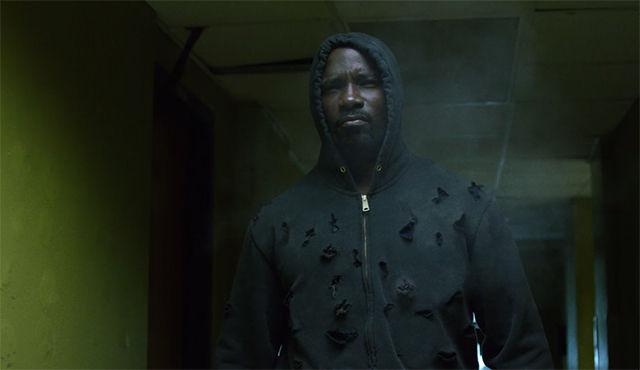“Luke Cage” is a show that values style over substance, and that’s not necessarily a bad thing. The third Netflix original Marvel superhero show has something different about it that sets it apart from normal television. Its not the show’s hero. TV is full of heroes and heroines and Cage isn’t even the first Netflix hero with super strength. It is not violence or sex because that can be found on almost any channel. “Luke Cage” has something Marvel and television are missing — a predominantly black cast.
Excluding Fox’s “Empire” and Donald Glover’s new FX show “Atlanta,” TV is pretty bland when it comes to its casts. “Luke Cage” features an African American hero, Cage (Mike Colter), fighting an African American villain, Cottonmouth (Mahershala Ali), on the streets of Harlem. Unlike Marvel’s movies, which seem to add African Americans into their rosters just to check a box, “Luke Cage” uses its predominantly black cast to enhance its setting, tone and style.
The characters in “Luke Cage” wear t-shirts and hoodies. They sit in barbershops and talk basketball or they play it outside. The children in the neighborhood don’t know their fathers. Now, can these elements be a bit stereotypical? Certainly. Fortunately, the show’s creators do not treat these details as opportunities to tell a “black joke” at every moment like the token black character in a comedy or horror movie. Instead, the creators take the time to home in on some of these details and expand upon them. Pop’s Barbershop, one of the show’s main settings, allows young black men to hang around the store in an effort to keep them off of the street, where they can be shot or worse, shoot someone else.
The show doesn’t dwell on race and someone could almost watch the entire show without ever thinking about the fact that Luke Cage is black, but it is impossible not to notice how, because of the show’s racial influences, “Luke Cage” feels different. This can be seen in the low, almost menacing angles used whenever a character crosses the street at night, or in the yellow, aged look the brick buildings and the air itself seems to have. Watching the show gives off a different feeling than watching any old Marvel movie or “Daredevil” or “Jessica Jones.” In one episode, a viewer can hear club jazz and Wu-Tang Clan, and that is fun.
Style aside, “Luke Cage” has some problems, most of which have to do with pacing. Cage is reluctant to use his powers because he doesn’t want the attention and he doesn’t want the people close to him to get hurt. It sounds familiar because it is familiar. To make matters worse, Cage is up against a pretty weak threat.
Cornell “Cottonmouth” Stokes is not the smart, hard-hitting gangster that the show’s trailers set him up to be and that’s a shame considering Ali can clearly play a character in control based off of his performance as Remy Danton in “House of Cards.” Netflix’s first seasons of “Daredevil” and “Jessica Jones” properly matched their amazing heroes with equally formidable villains. Matt Murdock found himself up against Fisk, a man who was tougher, smarter and more established than him. Jessica Jones was up against Kilgrave, an incredibly powerful and manipulative villain who could and did cause serious harm. Cage is up against an everyday gangster and his thugs, most of which are forgettable with the exception of Shades (Theo Rossi).
Throughout its first six episodes, “Luke Cage” tries to tell its audience that an invincible man can’t stop a poorly organized gangster and it certainly feels like a stretch. Watching Cage shrug of bullets is exciting, but every time it happens, it is hard not to ask why he doesn’t just stroll into Harlem’s Paradise, Stokes’ nightclub, and stop him. Several characters in the show even ask the same question and after half a season, the story begins to feel a little tiresome.
Despite these formulaic problems, “Luke Cage” manages to be entertaining and unique. The superhero plot is give or take, but the careful attention given to the dialogue, setting and music leaves viewers wanting to watch more.
A version of this article originally appeared in print on October, 3, 2016, on page 11 with the headline: ‘Luke Cage’ has promising first six episodes








